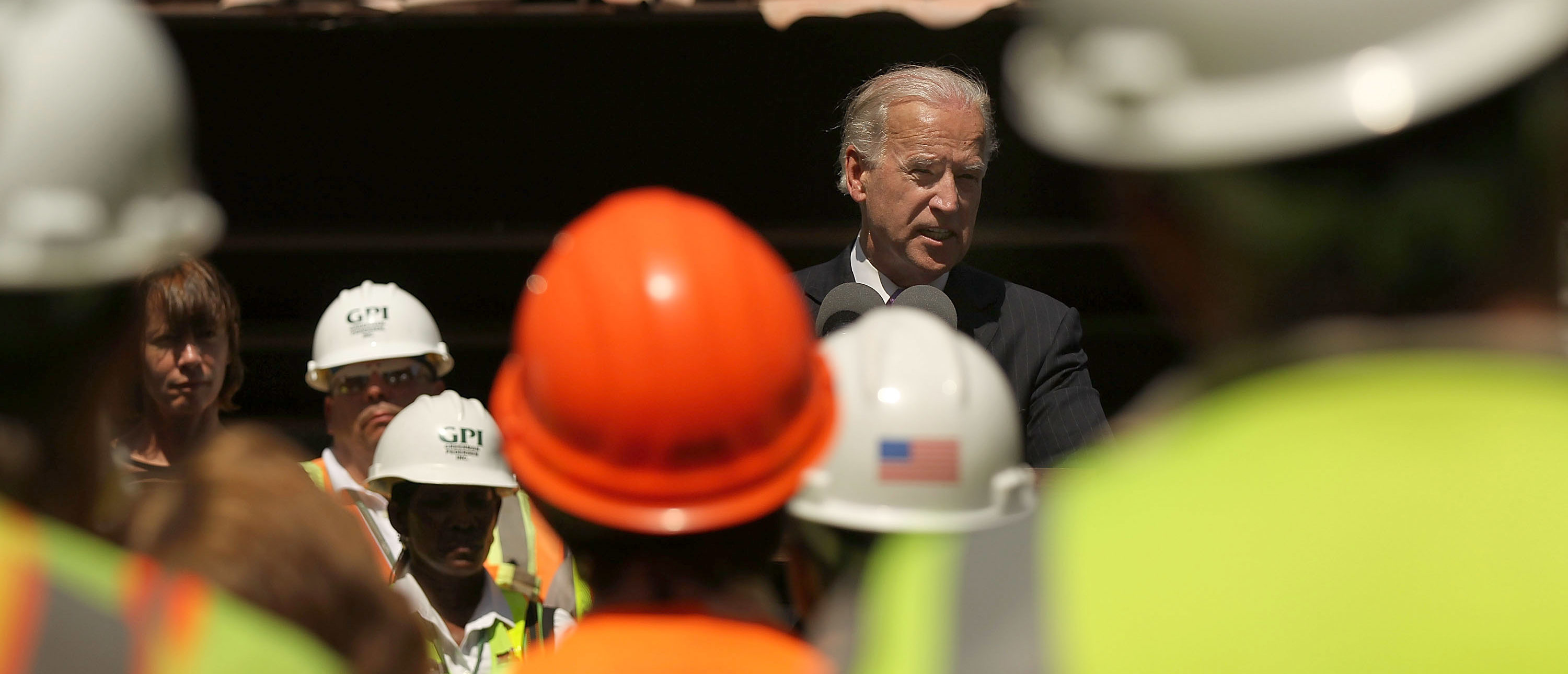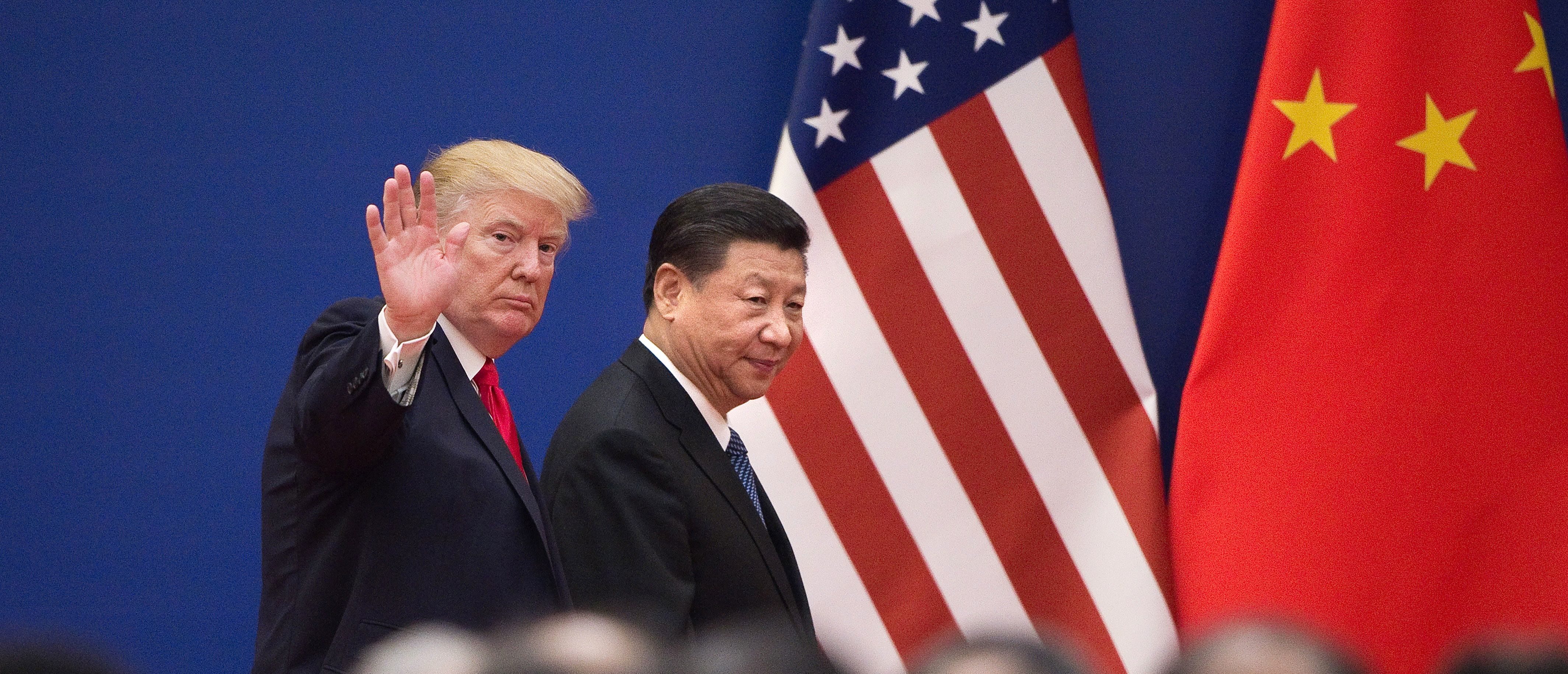Presumptive Democratic presidential nominee Joe Biden unveiled a major plank of his economic agenda Thursday, detailing his plan to revive American manufacturing in a speech near his hometown of Scranton, Pennsylvania.
The “Buy American” proposal calls for $400 billion of federal spending over four years on reshoring manufacturing and services back to the United States, and an additional $300 billion over four years on research and development involving artificial intelligence and other emerging technologies.
Biden’s “Buy American” plan may find sympathy among conservatives as it calls for a “pro-American worker tax and trade strategy” that involves rethinking trade practices and making it more difficult for companies to circumvent loopholes. (RELATED: OPINION: If Trump Wants Tariffs, He Must Avoid Loopholes)

Joe Biden speaks to construction workers under the Brooklyn Bridge (Spencer Platt/Getty Images)
One of President Donald Trump’s most important campaign promises was to renegotiate decades of bad trade deals that enriched multinational corporations at the expense of the American working class. During his first term, Trump shredded the Trans-Pacific Partnership, replaced NAFTA with the USMCA and signed a Phase One trade deal with China.
Biden’s “Buy American” plan also adopts a much tougher position on China. This includes proposals to reshore critical supply chains in order to reduce dependency on China, and to hold China accountable over its state-sponsored espionage and intellectual property theft.
During his first term, Trump blocked Chinese tech giants like Huawei from accessing American materials, cracked down on the nearly $600 billion worth of China’s intellectual property theft and threatened to decouple the American and Chinese economies entirely.
As Trump and Biden battle over who’s tougher on China, the former vice president’s “Buy American” plan offers China hawks in the Republican Party a number of proposals they could support. With a majority of Americans viewing China unfavorably and Republican lawmakers like Missouri Sen. Josh Hawley taking a “tough on China” approach, this aspect of Biden’s policy could turn some heads on the other side of the aisle.

President Donald Trump and China’s President Xi Jinping leave a business leaders event in Beijing (Nicolas Asfouri/AFP via Getty Images)
Although Biden’s plan to revamp trade deals and hold China accountable may sit well with conservatives, other aspects of his “Buy American” proposal stand opposed to the policies conservatives and Republican lawmakers have typically supported. (RELATED: Biden Bashes Trump Base While Admitting He ‘Probably’ Can’t Reach Them)
One area where Biden is likely to face conservative opposition is his desire to combine the “Buy American” plan with his education plan. Biden’s proposed education policy involves, among other things, a plan to make 4-year colleges tuition free for most Americans. Tuition-free college has traditionally been supported by Democrats and is unlikely to gain Republican support.
Fiscal conservatives have long opposed proposals to dramatically increase government spending on education. For example, the advocacy group Citizens Against Government Waste blames tuition-free college and student loan forgiveness on the rising cost of higher education.
Incorporating progressive education policies into his “Buy American” plan makes it more unlikely that Biden’s economic agenda would receive support from conservatives. Trillion dollar education plans have also been associated with politicians like Independent Vermont Sen. Bernie Sanders, which would further nullify any potential conservative support.
Another provision of the “Buy American” plan that could push conservatives away is its environmental component, particularly a plan to impose a carbon adjustment fee. Biden’s plan states that it would tax imports from foreign countries if they did not meet the appropriate environmental standards.

Sen. Bernie Sanders and Rep. Alexandria Ocasio-Cortez hold a news conference to introduce legislation as part of their Green New Deal proposal (Chip Somodevilla/Getty Images)
A major policy initiative of the Trump administration has been to clear federal regulatory hurdles imposed by the Environmental Protection Agency. During his first three years in office, Trump cut roughly 100 environmental regulations, effectively rolling back the entire climate agenda of his predecessor, Barack Obama.
Given that Biden served as Obama’s vice president and his platform includes a number of progressive environmental policies, his economic agenda won’t find conservative support on that front. Although Biden has stopped short of endorsing the Green New Deal, his “Buy American” plan calls for net zero emissions by 2050, which would certainly involve a plethora of regulations.


